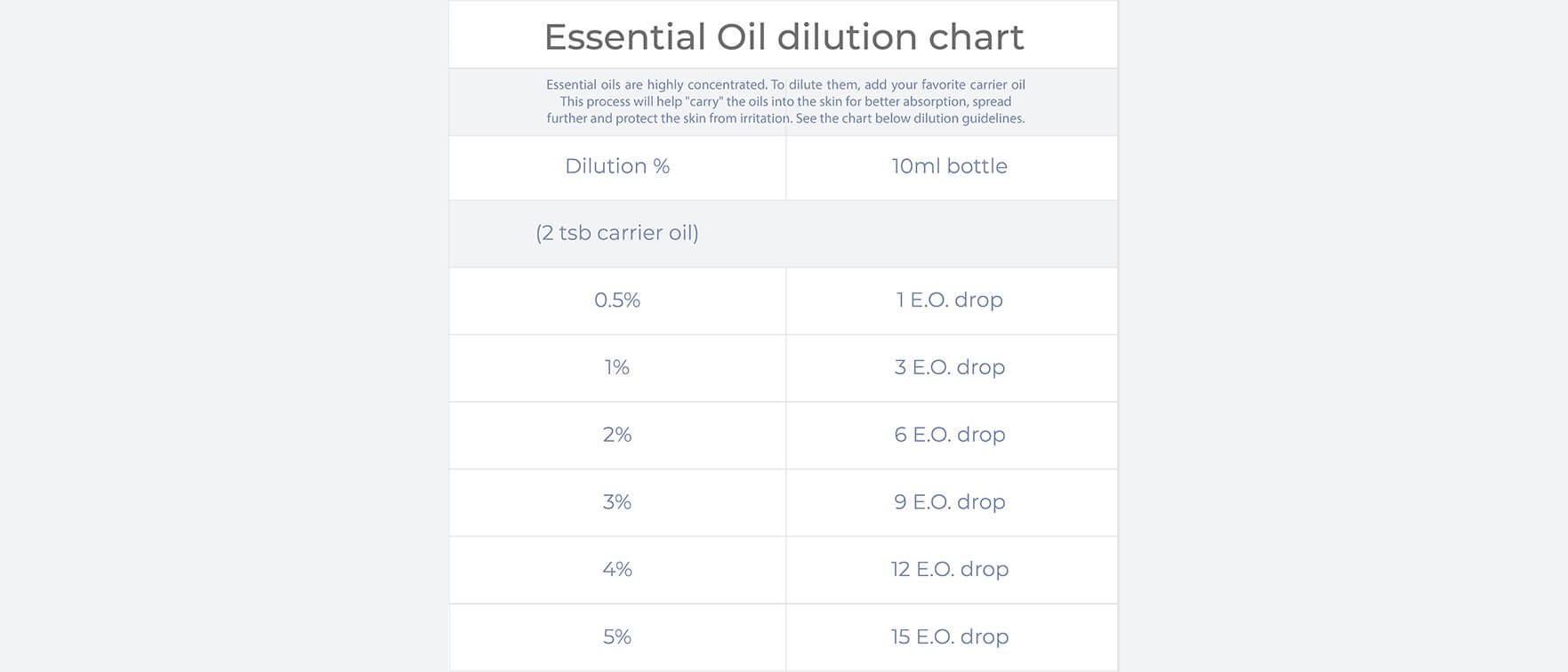How To Use Essential Oils
If you don’t know how to use essential oils, don’t feel overwhelmed or intimidated by how to get started with essential oils. It’s really easy and a lot of fun! Below are a few ways in which you can start using essential oils, and soon you’ll be surprised in how many areas of your life you are able to use your essential oils:
1. Apply to the skin
Essential oils are fat soluble, which means they are immediately absorbed by the skin. Some essential oils have stronger qualities than others and affect us in different ways, and some can be milder than others. Carrier oils serve to dilute the essential oil before applying it to your skin. They act as the base for “carrying” the essential oil that is being mixed into it.
All oils require dilution with a carrier oil when used topically on the skin. You can use any of these carrier oils: Olive oil, Jojoba, Fractionated Coconut, Sweet Almond, Avocado, Argan and Rosehip Seed
ESSENTIAL OIL DILUTION CHART
Essential oils are highly concentrated. To dilute them, add your favorite carrier oil. This process will help “carry” the oils into the skin for better absorption, spread further and protect the skin from irritation. See the chart below dilution guidelines.

Please consult with an aromatherapist or medical professional before using essential oils on children under two years of age. Hot oils such as Cinnamon, Clove Bud, and Oregano should be diluted to 0.5%, and should not be used on children under ten years of age.
Patch test: For first time use of an essential oil, a safe practice is to place a drop of diluted essential oil to a small area of skin such as the inside elbow. After application, be aware of adverse reactions for the first 24 hours. Possible reactions include skin irritation, headache, nausea, respiratory complaints or dizziness.2. Inhalation
You may choose to carefully inhale your essential oils. Open the bottle of essential oils, hold it up against your nose or place a few drops on a tissue or cotton ball, and take a deep breath to inhale and enjoy. When using a new essential oil for the first time, only use one drop to make sure you don’t have a reaction or sensitivity to the oil.
3. Using an Essential Oil Diffuser
Essential oil diffusers are designed to disperse a super fine mist of essential oils. They will gently fill the air with the aroma and healing benefits of the essential oil of your choice within minutes.
Put a few drops of essential oils in your diffuser, turn it on, and circulate the oil into your room. You can read my essential oil diffuser reviews (coming soon) about the different types of diffusers, how they work and how to use them.
4. Use in a bath
Baths have existed for centuries. Hot baths enhance the blood flow inside your body and enable the blood vessels to operate better. Adding essential oils to your bath is an amazing way to take a relaxing time-out during your busy day. Buy a box of simple Epsom salts as the base for your essential oils. If you just drop the oils into the water, they will not dissolve as nicely as they do when first mixed into the salts, who then dissolve beautifully. Please don’t combine any other chemically produced soaps or products into this mix in an effort to fully enjoy all the benefits of the essential oil and Epsom salts alone.
5. Aromatherapy Massage
Essential oils are too concentrated and strong to use for massage by themselves, so you need to mix them in with neutral-smelling carrier oils such as sweet almond oil or grape seed oil. Add up to 20 drops of essential oil to 1 ounce of carrier oil.
